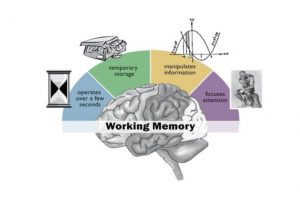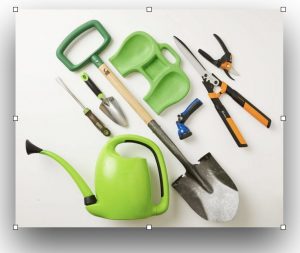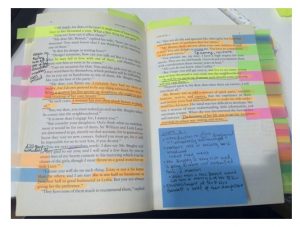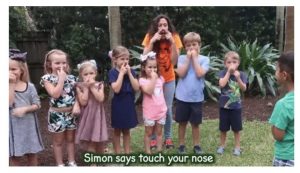Working Memory Activities for Children
Working Memory Activities for Children
This blog is on Working Memory Activities for Children.
What is working memory:
It is the ability to keep information active in your mind for a short period (2-3 secs), which is to be used for further processing. Also important for many days to day tasks such as following commands, speaking and listening to others, organisation and reading comprehension. It is nothing but a temporary storage system. In this blog, we will talk about Working Memory Activities for Children.
 Importance of working memory:
Importance of working memory:
Working memory is vital for synchronising the information that a child is learning along with their long term memory, which is their current knowledge storehouse. To hear new information, one should rely on their working memory to keep the heard information active so that they can focus, organise and problem solve.
When does the child use their working memory:
The child uses their working memory to meaningfully engage in day to day tasks such as
- Responding appropriately while conversing with others
- Following commands
- Reading a novel word
- Paraphrasing the speaker’s utterances
- Recalling what to answer when it they’re to speak during group discussion
- Understanding the written script
- Maths calculations
- Executive functions such as organisation and problem solving
Activities to improve their working memory skill:
Here are some Working Memory Activities for Children.
Help them to visualise:
Encourage your child to design a mental picture of what they have heard/read. Instruct them to mentally visualise what they are asked to do for a specific task (e.g. getting the things ready to do gardening) and then make them to draw that picture. Once they improve their visualisation skills, ask them to describe what they have visualised in their head without drawing it.
Engaging them in visual memory games:
Playing matching games such as memory, pairs, bingo, snap etc to improve their visual memory. Games such as reciting the letters and numbers on the car registration plate and asking them to say it backwards. You can also make them to highlight a particular word in the particular passage.
Ask them to teach you:
Stimulate the child to explain and teach you how to do a new skill (e.g. braiding their hair) that they have learnt. Explaining what they have learnt will help them to understand it better and store it in their long term memory.
Engaging them in card games:
Playing card games such as Go Fish, Uno would help them to remember its rules, which cards they have in their hand and also the already played cards. This would eventually improve their working memory skills.
Help your child in active reading:
Using highlighters/sticky notes and asking them to underline the keywords/ take notes would help them to keep the read information active for a long duration. This would help them to respond accurately to the questions asked about the given reading passage. When you ask questions about what they have read and talking aloud about it would encourage them to actively read and learn the reading strategies.
Presenting information through a multi-sensory approach:
When they process the given information in different ways would improve their working memory skill and also help in filling new information in their long term memory. Examples: writing down the given tasks, saying it aloud, throwing the ball back and forth while discussing what to do, drawing what they’re supposed to do, visualising the verbal information of others, showing them they have to do etc.
Support them to make connections:
Help them to search for ways to connect information. This would help them to form new and retrieve old memories. This can be achieved by using a pneumonic, for example, VIBGYOR, for remembering rainbow colours.
Forward and backward sequence repetition:
You can ask them to say a sequence of letters, numbers, days of the week, friend’s names, colours, etc in forward and backwards
Wordlist games:
Make your child to list out words by asking them “I went to the beach or market and saw….”
Playing “guess who?” game:
By recalling the memory of the facial features, one has to eliminate the characters by enquiring about what the character looks like.
Playing following the directions game, such as, “Simon says…”:
Give more than one instruction at a time and check if they can recall them all, for example: stand up, jump five times and then hop three times or ask the child to finish an obstacle course in order to reach a reward by recalling the directions to get there (stand on the chair, go under the desk, though the tunnel).
Building a block tower:
Each person should take a turn to say two colours that they need to build. Take turns to tell each other two colours and gradually increase the number of colours to build on to their tower.
Get the loot:
Present to be pirates and have two ships with pictures of the objects for the loot. Each child should bring back two objects from the other ship. Then gradually increase the number of items to get.
Picnic time:
Ask the child to get two to three things to take for a picnic.
Chunking large pieces of information into smaller bits:
When you ask your child to follow multi-step directions, you can either write them down or give them one at a time or you can use a visual organiser.
Conclusion:
Working memory can be compared to a bucket where you can keep filling it up using a glass of water. Every drop of water that you add remains in the bucket, unless, over time memory evaporates over lack of repeated use. So for children with poor working memory, it’s like a bucket that has a hole in the bottom. Though you keep pouring in the glasses of water (knowledge), it continuously drains out. If you feel that your child has working memory difficulty, consult a speech-language therapist at 1Speecial Place for a language assessment to assist their working memory skills.
Source:
https://childdevelopment.com.au/areas-of-concern/working-memory/
- Best Books for Children with Autism Spectrum Disorder - December 20, 2022
- Selective Mutism - November 13, 2021
- Everyday Items as Awesome Toys: Play Dough - July 27, 2021





Leave a Comment
(0 Comments)